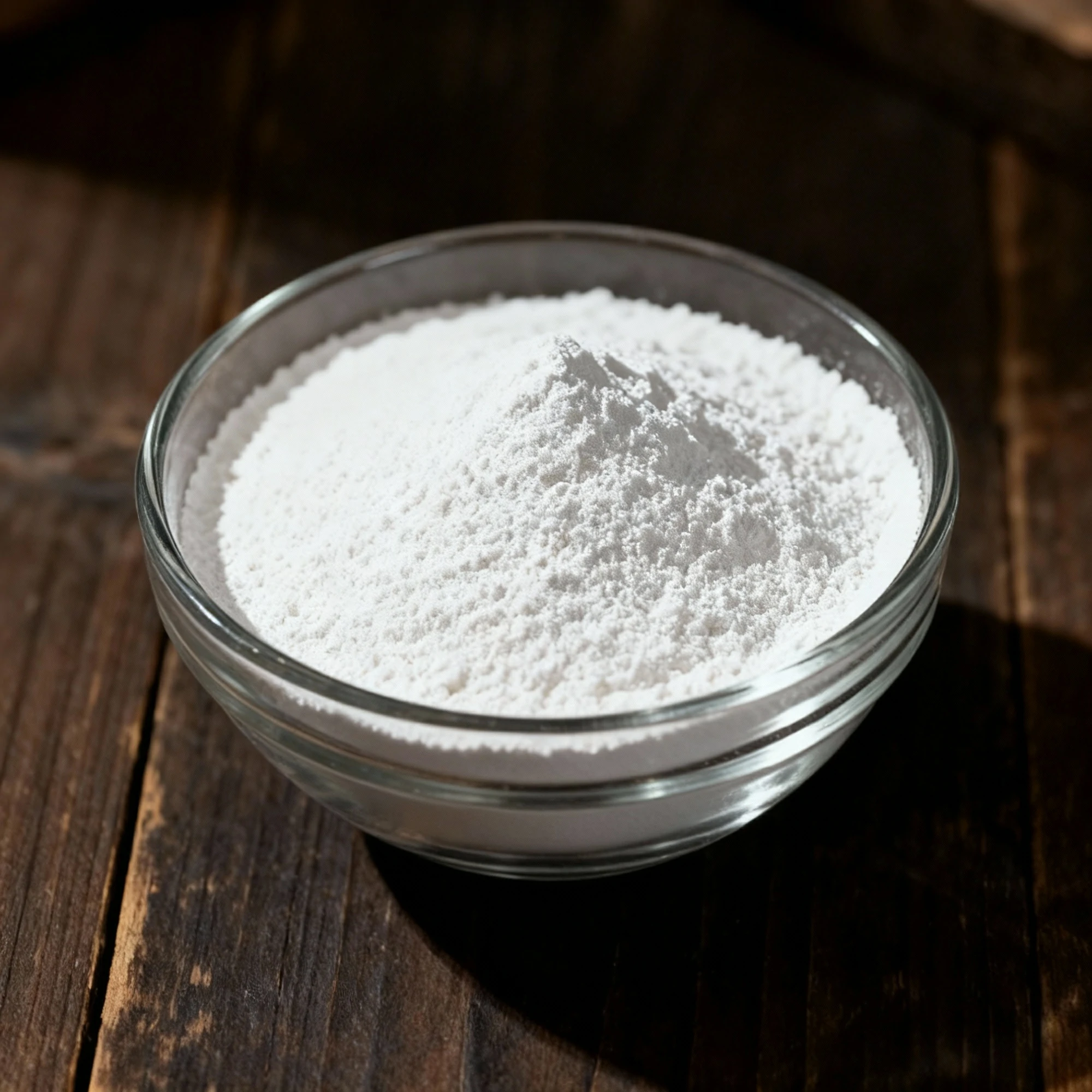

Thiamine (Vitamin B1)
One unit of:25kg/barrel
Product Info
What is Thiamine (Vitamin B1)?
Thiamine (Vitamin B1) is an essential water-soluble nutrient used extensively in the food industry as a fortifying agent to enrich grains, cereals, and flour, thereby supporting healthy metabolic function and preventing deficiency.
How is Thiamine (Vitamin B1) made?
| Step No. | Production Stage | Key Action | Control Point & Note |
|---|---|---|---|
| 1 | Pyrimidine Synthesis | Synthesize the pyrimidine ring intermediate (e.g., 4-amino-5-aminomethyl-2-methylpyrimidine). | Control Points: Purity of raw materials, reaction temperature, and pH. Note: The integrity of this heterocyclic ring is fundamental to the final molecule's biological activity. |
| 2 | Thiazole Synthesis | Synthesize the thiazole ring intermediate (e.g., 4-methyl-5-(β-hydroxyethyl)thiazole). | Control Points: Strict temperature control and use of an inert atmosphere to prevent side reactions. Note: This step introduces the critical sulfur atom into the structure. |
| 3 | Coupling Reaction | Condense the pyrimidine and thiazole intermediates to form the Thiamine molecule. | Control Points: Precise molar ratio of the two intermediates, reaction medium, and temperature. Note: This is the core step where the two halves are joined to create Vitamin B1. |
| 4 | Salt Formation | Convert the synthesized Thiamine base into a stable salt (Hydrochloride or Mononitrate). | Control Points: Stoichiometric addition of acid (HCl or HNO3). Note: Salt form enhances stability and suitability for formulation. Thiamine Mononitrate is often preferred for its lower hygroscopicity. |
| 5 | Crystallization | Purify the Thiamine salt by controlled crystallization from a solvent. | Control Points: Solvent selection and a controlled cooling rate to achieve high purity and desired crystal size. Note: A critical purification step to remove process impurities. |
| 6 | Washing & Drying | Wash the crystals to remove residual mother liquor and dry under vacuum. | Control Points: Washing solvent purity. Drying temperature and vacuum level must prevent thermal degradation. Final moisture content must meet specifications. |
| 7 | Milling & Sieving | Reduce the particle size of the dried crystals to meet specifications. | Control Points: Mill settings and sieve mesh size to ensure a uniform powder. Note: Ensures good flowability and dissolvability for final product applications. |
| 8 | Quality Control & Packaging | Conduct final analysis and package the finished product. | Control Points: Testing against pharmacopeia standards (USP/EP) for purity, potency, and contaminants. Packaging must be airtight and light-resistant to ensure stability. |
Technical Specifications
| CAS Number | 59-43-8 |
| Chemical Formula | C₁₂H₁₇ClN₄OS |
| Solubility | Highly soluble in water (≈1 g/mL), partially in glycerol, sparingly in alcohol, insoluble in non‑polar solvents |
| Storage Conditions | Cool, dry, airtight, protect from light and heat |
| Shelf Life | 24 Months |
Applications & Usage
Common Applications:
Mechanism of action:
| Parameter | Thiamine (Vitamin B1) |
|---|---|
| Functional Category | Nutrient Fortification; Flavor Precursor; Processing Aid |
| Key Ingredients | Thiamine hydrochloride; Thiamine mononitrate |
| Mechanism of Action | Functions as the coenzyme thiamine pyrophosphate (TPP), which is essential for carbohydrate metabolism and energy production in biological systems. During thermal processing, it serves as a precursor in Maillard reactions, degrading to produce key sulfur-containing volatile compounds (e.g., thiazoles, thiophenes) responsible for savory and meaty aromas. |
| Application Effect in Product | Enriches foods like flour, cereals, and pasta to restore nutritional value lost during processing or to address dietary deficiencies. Contributes to the development of desirable cooked, roasted, and meaty flavor profiles in savory products, meat analogs, and baked goods. Can influence final color and aroma development. |
Comparison:
| Product Name | Category/Type | Key Features | Strengths (vs peers) | Weaknesses (vs peers) | Best Use Cases | Why Choose |
|---|---|---|---|---|---|---|
| Thiamine (as HCl or Mononitrate) | Water-Soluble B-Vitamin | Standard, essential nutrient form for energy metabolism and nerve function. | Lowest cost, most widely available, effective for preventing simple dietary deficiency. | Low bioavailability; absorption is rate-limited and can be poor at high doses. Does not effectively cross the blood-brain barrier. | General daily supplementation, inclusion in multivitamins, preventing classic deficiency (beriberi). | For cost-effective, routine nutritional support in healthy individuals. |
| Benfotiamine | Fat-Soluble Thiamine Derivative | Synthetic S-acyl derivative that converts to thiamine in the body. | Significantly higher bioavailability than standard thiamine, raising blood and peripheral tissue levels more effectively. | Less effective at raising thiamine levels in the brain compared to TTFD or sulbutiamine. Higher cost. | Supporting peripheral nerve health, especially related to diabetic neuropathy; managing advanced glycation end-products (AGEs). | When superior absorption is needed to target issues outside the central nervous system, like nerve pain. |
| Sulbutiamine | Fat-Soluble Thiamine Derivative | Synthetic dimer of two modified thiamine molecules, designed to cross the blood-brain barrier. | Excellent penetration of the blood-brain barrier; has noticeable nootropic effects on fatigue, mood, and focus. | Tolerance can develop with continuous use; primarily impacts the central nervous system, not ideal for systemic deficiency. High cost. | Combating mental fatigue (asthenia), short-term cognitive enhancement, improving focus and motivation. | To specifically target brain fog and mental fatigue, rather than for general nutritional needs. |
| Fursultiamine (TTFD) | Fat-Soluble Thiamine Derivative | Synthetic disulfide derivative able to cross cell membranes and the blood-brain barrier without a transporter. | Extremely high bioavailability in all tissues, including the brain and central nervous system. Considered a very powerful form. | High cost, less common than other forms. Can have a strong sulfur-like odor or taste. | Severe or complex thiamine deficiencies, neurological conditions, autonomic dysfunction, cases where thiamine transport is impaired. | For maximum whole-body and brain replenishment when standard forms are insufficient. |
Technical Documents
Available Documentation
Spec sheet & COA
Safety Data Sheet (SDS)
MSDS available
Certificate of Analysis (COA)
Quality assurance documentation
Technical Data Sheet
Detailed technical specifications